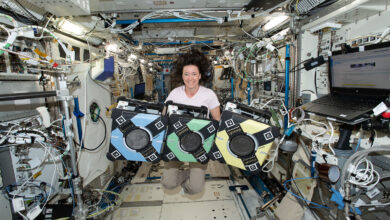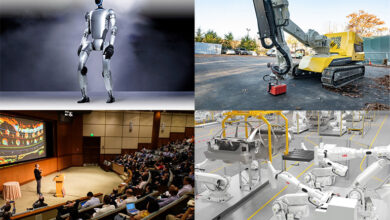In ‘Tech Tank,’ a new home for testing amphibious robots, other innovations
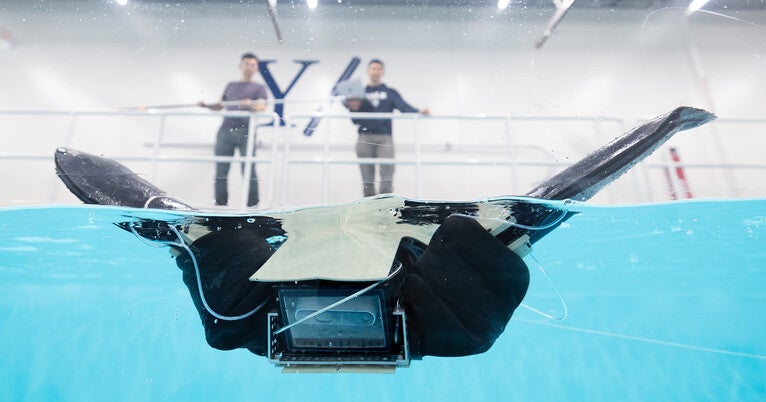
The technology behind amphibious robotics, marine observation devices, and other water-based innovations has progressed dramatically in recent years. Finding research facilities that can keep up with these advances, though, has proved tricky.
To that end, Yale University recently introduced its own “Tech Tank,” a specialized facility for testing such advanced technologies under very specific and tightly controlled conditions.
Housed in a former warehouse at Yale’s West Campus, the 20,000-gallon tank features a wave generator, a moveable mesh ramp, and climate control. It’s 40 feet long, 10 feet wide, and the water is six feet deep.
Although the tank is managed by the Yale School of Engineering and Applied Science, it will be open to researchers in all fields, both at Yale and beyond. The tank is the latest development in Yale Engineering’s commitment to robotics, an initiative that has doubled the number of faculty focusing on robotics at the school.
“The field of robotics is poised to impact nearly every facet of life, from health care to transportation, to manufacturing,” said Yale Engineering Dean Jeffrey Brock. “We need every resource that will allow us to prepare and optimize for all the ways that robots can assist humans, whether it’s on land or in water, indoor or outdoor. The Tech Tank is a big step toward achieving that goal.”
One researcher who has already made use of the Tech Tank is Rebecca Kramer-Bottiglio, the John J. Lee Associate Professor of Mechanical Engineering & Materials Science. She has developed an amphibious robotic turtle with working limbs that can morph from flippers to legs. The technology poses numerous questions: How and when should a robot change its shape and behavior when transitioning between environments? How will its function be affected by environmental variations such as currents, wave energy, and water temperatures?
“These are really challenging questions, and having this facility will allow us to answer them,” she said.
Using the Tech Tank, Kramer-Bottiglio and her team can now make precise measurements and observations as their robots move through the water at different inclines, on different substrates, and amid waves of varying heights and intensities.
Other researchers have some ideas about how they can also make use of the facility.
“My group is developing autonomous systems, and the Tech Tank gives us the means to evaluate how they function in challenging aquatic domains that are hard to reproduce,” said Ian Abraham, assistant professor of mechanical engineering & materials science. “This could uncover novel research directions and foster a new age of robotic systems that are robust and capable in extreme environments.”
Being a unique, custom-made facility, the designers and builders, Tim L. Brewer Architecture and Bond Building Construction, worked very closely with Yale to get all the specifications and logistics right.
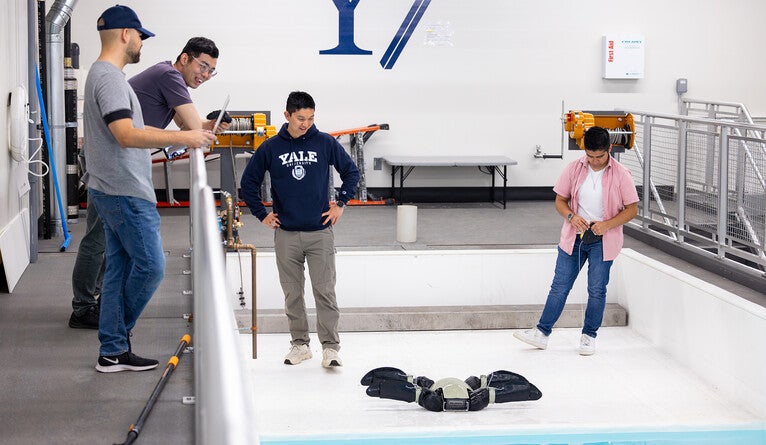
“We had a great group of professionals who are at the top of their field, and they worked really closely with Yale Engineering faculty and students,” said Kim Heard, associate director of research operations at West Campus. “They talked through a lot of the things the tank needs to do, and we designed it so that we can make changes in the future when other collaborators and faculty come in and want to use it.”
The challenges of designing something so new and large in scale were significant, said Chris Incarvito, associate provost for science initiatives at Yale, but the enthusiasm of everyone involved kept the ambitious project on track. From the architects to the engineers to the builders, he said, everyone worked together to make it happen. Some problems required particularly creative thinking.
“The ramp, for example, is completely novel,” he said. “How could we install it without limiting the pool? If we had put a fixed ramp in, then half of the pool couldn’t be used.” The solution: a movable mesh ramp that allows researchers to adjust it as needed.
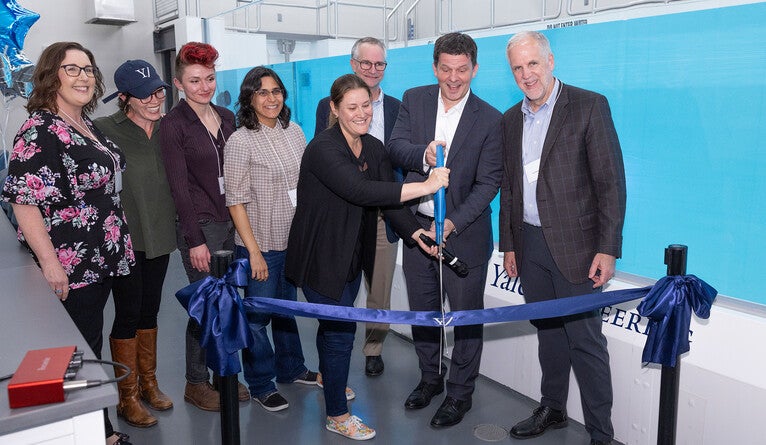
The Tech Tank, Incarvito noted, is an example of how West Campus affords research opportunities that otherwise would not have been possible, thanks to its considerable expanse.
“It allows us to do what you might call ‘big science’ and experiments on a grander scale that can’t be housed anywhere else,” he said.
Before the installation of the Tech Tank, Kramer-Bottiglio’s lab used whatever research venues were available at the time. For a while, that meant conducting experiments at the Payne-Whitney Gym swimming pool. When the pandemic hit, she used the backyard pool of Vince Wilczynski, a deputy dean at Yale Engineering. The researchers also conducted experiments in Mill River at East Rock Park, which attracted curious onlookers with many questions about the swimming robot.
Kramer-Bottiglio also tried estuaries, lakes, and even ocean fronts. None of these options provided the ideal conditions for research, particularly in relation to how the robot transitions from one environment to another.
“Controlling the transition variables in the field was challenging, making it difficult to optimize the robot’s actions in response to those variables,” she said. “With the Tech Tank, we can now control the transition environment. This allows us to train the robot in various conditions, enhancing its readiness to handle real-world environments.”
Although Kramer-Bottiglio is the first to conduct experiments in the tank, the facility is open to all kinds of scientific inquiry.
“The only stipulation here is that you need to be asking a question that can be solved by observing something in an aquatic environment,” Incarvito said. “That could include everything from robotic turtles to marine engineering to environmental scientists who use buoys for environmental monitoring to see whether they’re seaworthy.”
For those who want to see the Tech Tank in person, a community open house will be held from 11 a.m. to 1 p.m. on Friday, June 14. Visit techtank.yale.edu to reserve a spot.
